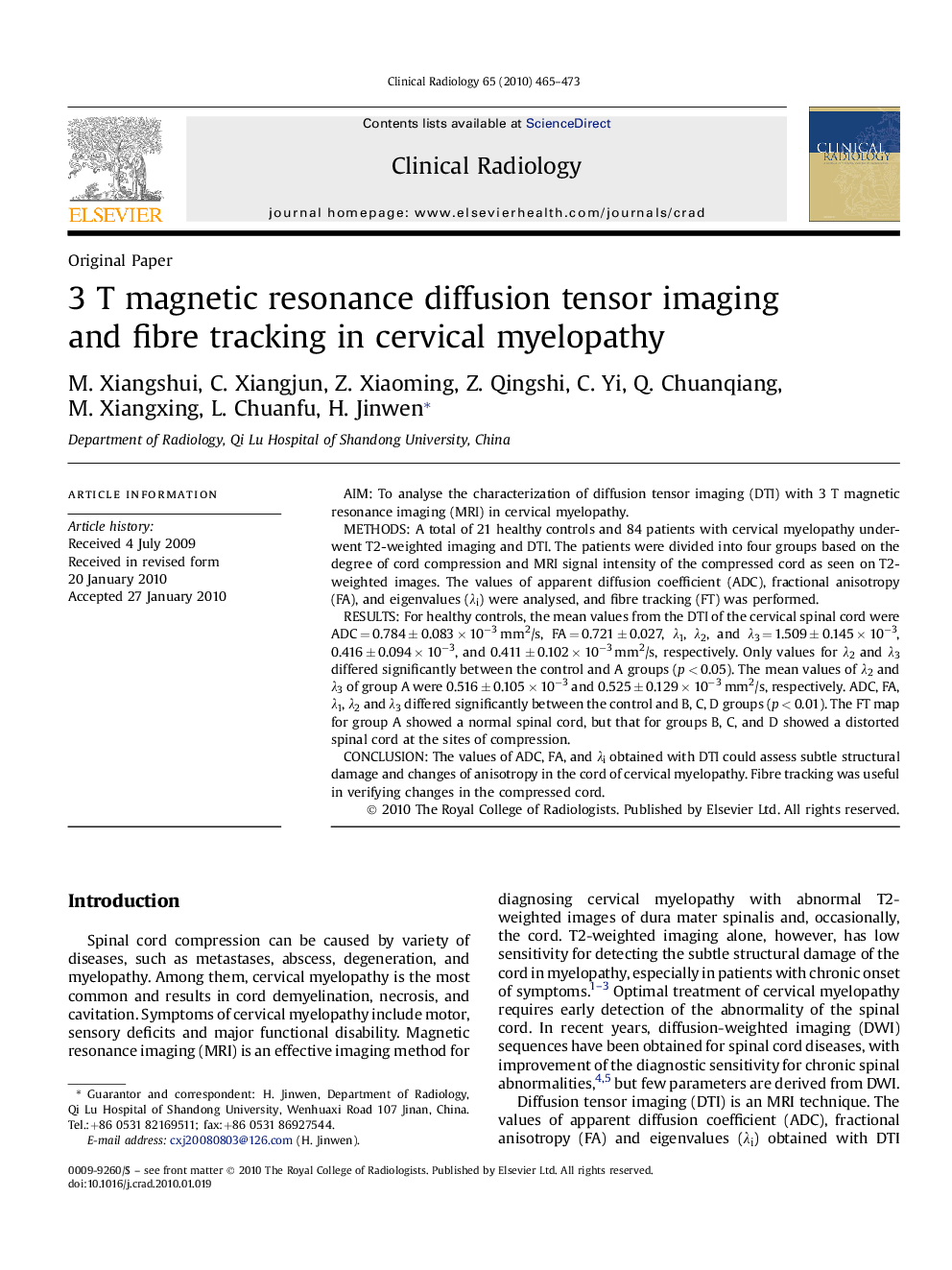| Article ID | Journal | Published Year | Pages | File Type |
|---|---|---|---|---|
| 3983079 | Clinical Radiology | 2010 | 9 Pages |
AimTo analyse the characterization of diffusion tensor imaging (DTI) with 3 T magnetic resonance imaging (MRI) in cervical myelopathy.MethodsA total of 21 healthy controls and 84 patients with cervical myelopathy underwent T2-weighted imaging and DTI. The patients were divided into four groups based on the degree of cord compression and MRI signal intensity of the compressed cord as seen on T2-weighted images. The values of apparent diffusion coefficient (ADC), fractional anisotropy (FA), and eigenvalues (λi) were analysed, and fibre tracking (FT) was performed.ResultsFor healthy controls, the mean values from the DTI of the cervical spinal cord were ADC = 0.784 ± 0.083 × 10−3 mm2/s, FA = 0.721 ± 0.027, λ1, λ2, and λ3 = 1.509 ± 0.145 × 10−3, 0.416 ± 0.094 × 10−3, and 0.411 ± 0.102 × 10−3 mm2/s, respectively. Only values for λ2 and λ3 differed significantly between the control and A groups (p < 0.05). The mean values of λ2 and λ3 of group A were 0.516 ± 0.105 × 10−3 and 0.525 ± 0.129 × 10−3 mm2/s, respectively. ADC, FA, λ1, λ2 and λ3 differed significantly between the control and B, C, D groups (p < 0.01). The FT map for group A showed a normal spinal cord, but that for groups B, C, and D showed a distorted spinal cord at the sites of compression.ConclusionThe values of ADC, FA, and λi obtained with DTI could assess subtle structural damage and changes of anisotropy in the cord of cervical myelopathy. Fibre tracking was useful in verifying changes in the compressed cord.
